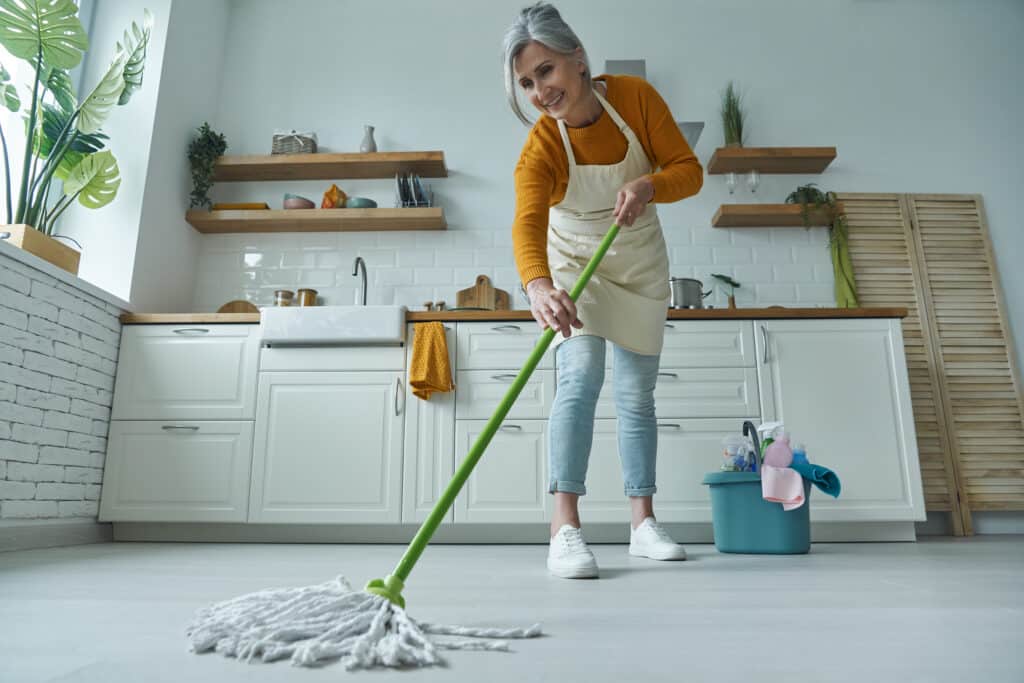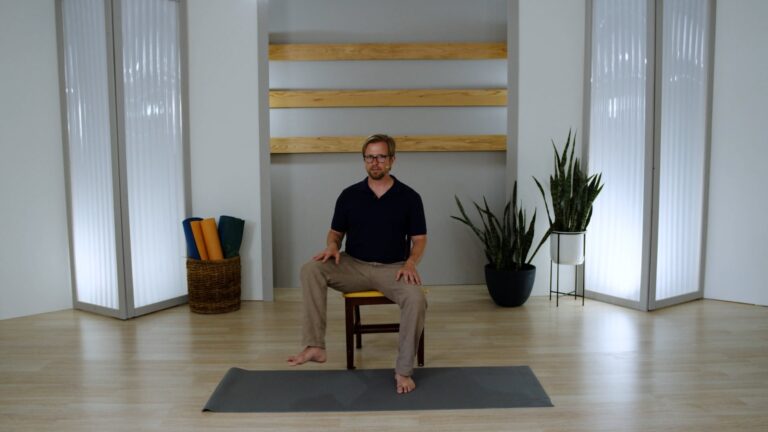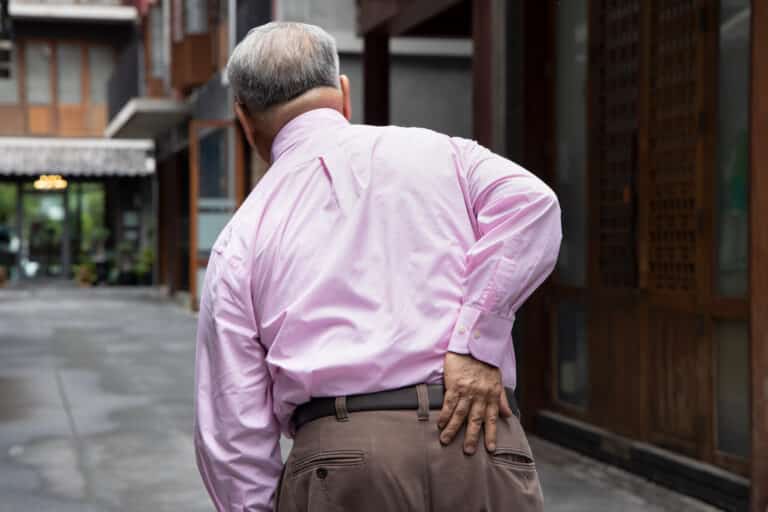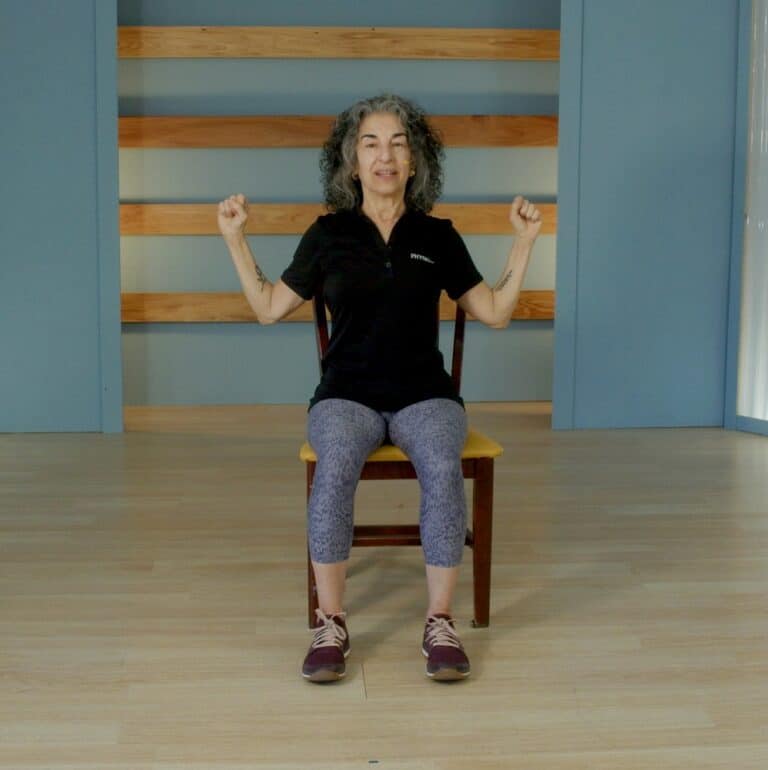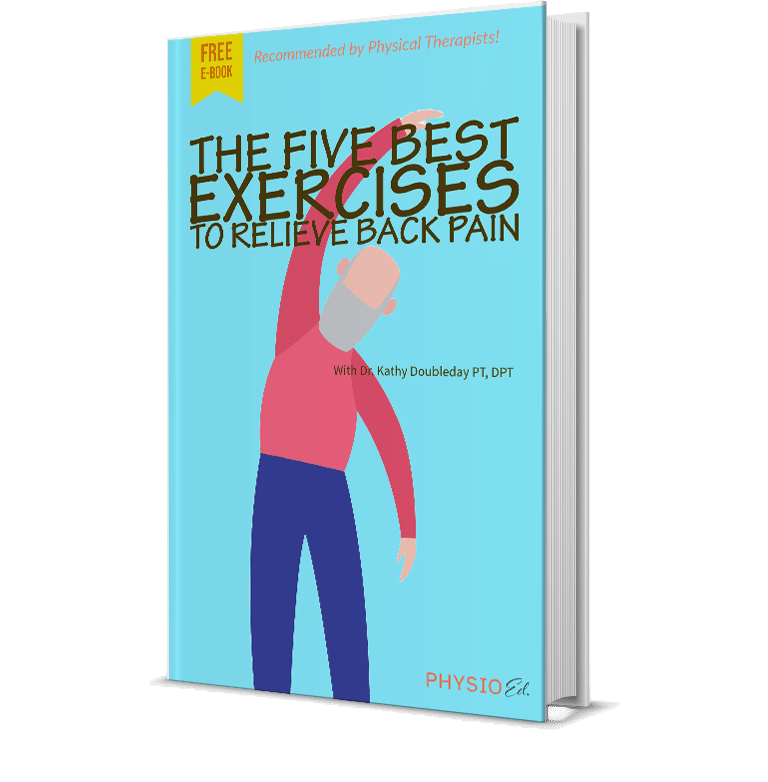With rates of preventable disease continuing to climb, exercising for a healthy body has never been more important. Fortunately, you don’t have to have a gym membership to burn calories.
You don’t need an exercise physiologist to tell you that breaking a sweat is an indicator that your body is working hard. Some household chores can be comparable to other forms of moderate exercise to benefit your waistline, your cardiovascular fitness, and even your mental health.
In this article, we’ll explore how your to-do list might be reframed into a fun and simple way to get a little extra exercise on a daily basis.
Does Housework Count as Exercise?
Unfortunately for seniors new to exercise, the gym can often be chock full of intimidating characters, loud music, and lots of ways to hurt yourself.
While it may be tempting to think that the only way to get in shape is by walking endlessly on a treadmill or picking up heavy things at the gym, you can actually turn your daily chores into a mode of healthy exercise!
In reality, some of the most important health benefits can be found around your home. We are big proponents of functional exercise that enhances and improves your day-to-day function.
Functional Exercise
Non-injured, healthy adults are capable of a variety of essential movements, and many of them can be found in simple daily tasks that you might find yourself doing around the house on a Saturday afternoon.
Lifting and carrying bags of potting soil, washing the car, or standing on one leg to dust a high shelf are all functional movements. While they may not seem like much, these movements can both burn calories and utilize muscles that would go unused if you decided to skip your chores to lay on the couch.
Furthermore, many tasks might get you into positions that need to be trained to remain fully healthy and functional. For example:
Gardening typically requires you to get on the ground, either kneeling, sitting, or squatting, which are positions that tend to get harder for many older people if they are avoided.
Tasks like mopping or vacuuming require that your body moves in a transverse (or twisting) motion, that you may not otherwise use, building core strength.
Mowing the lawn requires you to move dynamically to steer, rotate and push against resistance, encouraging your body to work harder, building a sweat, and increasing calorie burn.
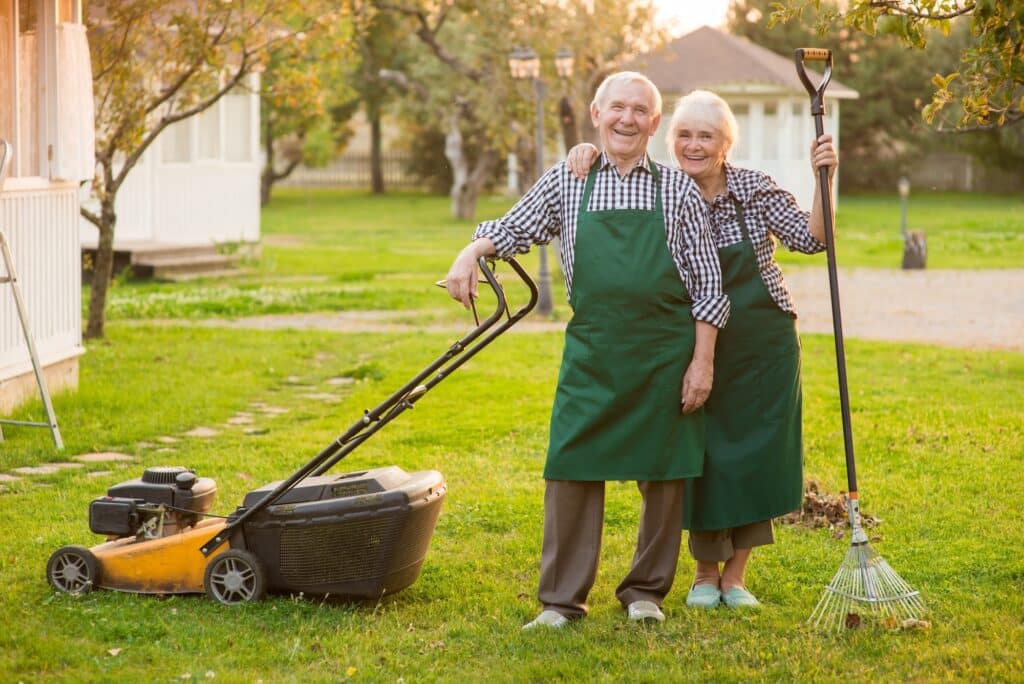
Calories: Feeding the Fire
You may be wondering what exactly we’re talking about when we say calories burned:
Calories are a measure of the energy produced by the food you consume.
To keep this simple, you can think of your body as similar to a wood-burning furnace. Calories from food could be considered like wood that you would feed to the fire. But excess calories are stored, just like extra wood for the winter.
When your body moves, regardless of the degree of intensity, the fire builds and uses fuel. If you move a lot, especially at moderate or vigorous levels of intensity, you’ll need – and you’ll burn – more calories. Quite literally, your body heats up when you’re exercising; you’re heating up the fire of your metabolism to move muscle.
On the other hand, you can only fit so much wood in a slow-burning stove. Extra wood (aka, cookies) is stored for later use. Unfortunately for our health, that energy storage comes in the form of body fat.
When you move more, your body efficiently uses the energy it consumes, but if you sit around eating potato chips instead of mowing the lawn, you’re adding inches to your waistline, and making it harder to stay on track with your weight maintenance goals.
You can consider your daily chores as “exercise” by the simple fact that you’re moving your body, burning calories, and getting your heart rate up. Even walking up and down stairs or standing while you do dishes burns more calories than sitting.
The technical term for this principle is non-exercise activity thermogenesis (NEAT), but all you need to know is that movement, even something as simple as sweeping floors can lead to higher calorie burn.

Housework As An Exercise Routine
Now let’s take a look at how you can use your spring cleaning to-do list to get a little extra exercise into your daily routine.
As we’ve established, some movement is always better than no movement– or some chores are better than no chores.
While weekly household chores might not be on par with the exercise intensity level as, say, climbing a mountain, it can still offer an opportunity to boost your overall weekly physical activity amount.
Traditional exercises often involve repetition, whether you’re talking about bicep curls or laps around the track. Here are a couple of suggestions for how you can build short bouts of exercise into your chores:
Do It More Than Once: Say you’re mopping the kitchen floor, and perhaps it takes ten minutes. Why not give it a second round? Not only will the floor be extra clean, but you’ll have moved twice as much. Extra points for using your opposite hand and foot to lead to boost your coordination.
Make it into repetitions: Need to carry a bag of potting soil across the yard? Why not walk back and forth a couple of extra times? Remember, weight-bearing exercise boosts bone mass for older people, and you’re building extra strength! Or perhaps you find yourself repeatedly passing a chair in your living room. Every time you pass the chair, sit down and stand up 5-10 times until you feel a little fatigue in your legs.
Make it harder on purpose: Need to run to the store for some cleaning supplies? Park in the farthest parking space, to get in some extra steps.
Move a little faster: A brisk walk makes you sweat more than a slow one; try simply going just a little bit faster while you mop or wash the car. (safely of course 😉)
Make it a whole-body movement: Nothing says deep clean like getting on all fours to vacuum under the couch. Getting up and down from the floor is one of the most important movements you can practice, so why not get a little cleaning in while you do it?

Potential Health Benefits of Using Housework as Exercise
Public health messages tend to emphasize exercise for body weight management in terms of consecutive minutes or hours of work, but that may not be accessible to everyone. If you happen to have a busy schedule, it’s important to make sure you stay active creatively with your daily physical activity.
It’s also important to consider that the decision not to move might be more costly than just leaving some dust bunnies behind the couch.
A recent study from Korea states that a sedentary lifestyle can contribute to an increased risk for cancer, heart disease, diabetes, and a wide array of other forms of preventable illness. (1)
It’s also important to remember that seemingly simple activities like walking are well-established and accessible forms of exercise for most older people. And what’s mowing the lawn if not a walking workout? (No riding mowers for us!) (2)
So whether you’re simply trying to get some extra steps in, or you’re going the extra mile to do a couple of pushups on the kitchen counter after doing dishes, a little extra movement can prevent behavior patterns that can lead to disease or even early death. (1)
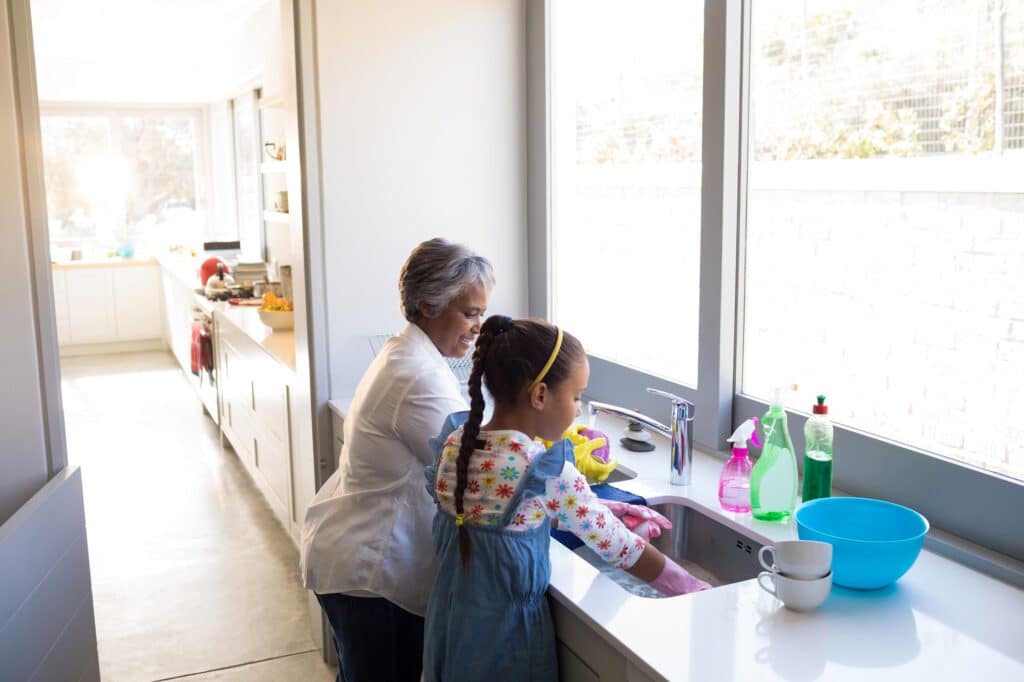
Summary
Does housework count as exercise? From our perspective, absolutely it does!
The worsening obesity crisis is cause for alarm, but combatting overweight can be as simple as moving more while being careful to watch calorie intake.
If cleaning helps you to meet your recommended exercise, see what you can do to make it a little bit more vigorous, or just take a long walk to unwind after your housework.
And of course, if you need a break from chores and want to get a short workout in, visit our YouTube page for a variety of classes and tutorials to get you started.
References
Park JH, Moon JH, Kim HJ, Kong MH, Oh YH. Sedentary Lifestyle: Overview of Updated Evidence of Potential Health Risks. Korean J Fam Med. 2020 Nov;41(6):365-373. doi: 10.4082/kjfm.20.0165. Epub 2020 Nov 19. PMID: 33242381; PMCID: PMC7700832.
Lee, I. M., & Buchner, D. M. (2008). The importance of walking to public health. Medicine & science in sports & exercise, 40(7), S512-S518.
Obesity & Overweight in America https://www.cdc.gov/obesity/index.html
How much physical activity do older adults need?https://www.cdc.gov/physicalactivity/basics/older_adults/index.htm

